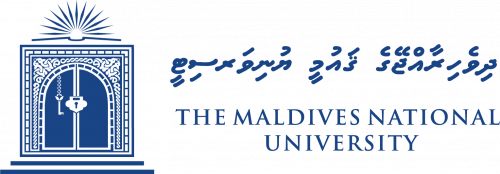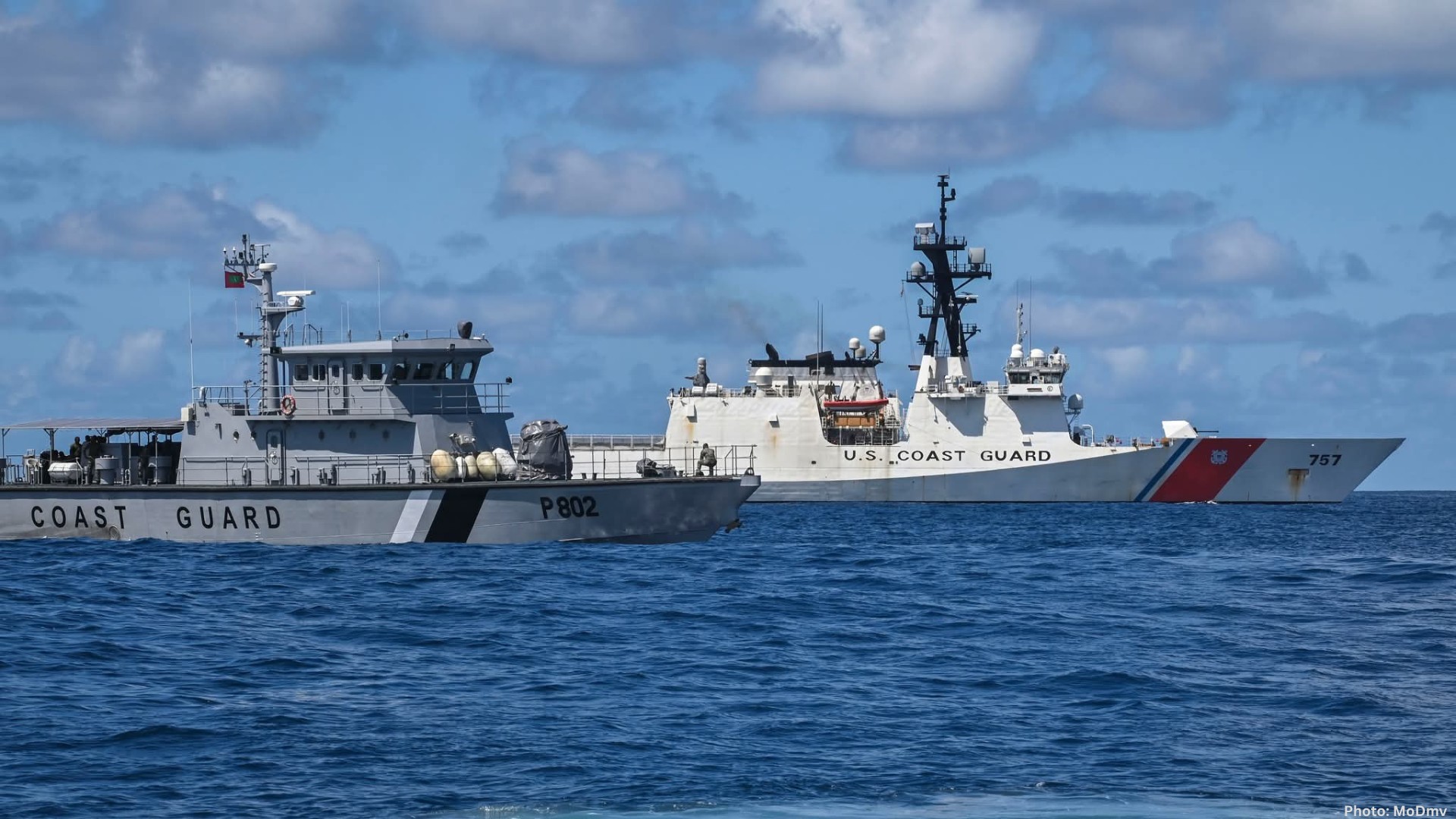Introduction
Maldives faces multifaceted challenges in ensuring its defence, such as limited resources, manpower, and high infrastructure management costs. It is essential to have a defence force tailored to Maldives’ unique needs. With about 99 per cent of its ocean territory, Maldives can be viewed as a ‘big ocean state’. With no land borders shared with other countries, the appropriate structure for its defence must consider its unique history, geographic landscape, and the nature of specific maritime threats it faces.
Historical events explain how security threats and invasions have shaped Maldives’ approach to national defence. For example, the invasion of Maldives by the Portuguese on 19 May 1558 must be highlighted. There was no formal acknowledgement by the Portuguese Government of invading Maldives. Rather, as far as the local narratives go, the country was invaded by a piratical force, assassinating the ruler and ruling the country for fifteen years. The Portuguese were defeated by a local named Mohamed Thakurufaanu, a resident from the northern island of Utheemu. He had a tactical mind, formed a militant group, built a large local-style boat named ‘Kalhuohfummi’, sailed to and attacked Malé with his trusted locals, and defeated Portuguese belligerents, taking back Maldives’ independence.
This type of locally induced amphibious raid by the Kalhuohfummi reflects the culture and identity of a naval seamanship inherent in Maldives.
Small State Dependency and Strategic Cooperation
Maldives depends on aid partners to support its development and security, and has fostered development and strategic partnerships with India, Australia, China, and the United States. In an era of geopolitical competition among major powers, Maldives has adopted a strategic approach to safeguard its interests and prevent foreign aid partners from exerting undue influence over its domestic affairs.
Historically, Maldives was a British protectorate from 1887 to 1965. The then ruler – i.e., the ruler was the King – negotiated a protection agreement with the British colonial Governor based in Sri Lanka, to protect this island nation against potential pirates and invaders at sea. This agreement did not come without challenges.
For example, the control over Maldives enabled the British, during World War Two (WWII), to install a Royal Air Force (RAF) base on the southernmost atoll, Addu Atoll. The base was utilised for the British military’s logistical operations and the RAF’s refuelling purposes.
During their occupation, the British employed divide-and-rule strategies, turning Maldivian communities against the Malé government.
However, under the protection agreement, the Malé government maintained a defined level of autonomy over domestic political affairs – i.e., primarily, the British controlled foreign and security policies. This political autonomy enabled the then-ruler, former president Ibrahim Nasir (1957-65) – by this time, the country had turned to a republic-type political system – to act locally and dismantle the separatist southerners’ uprising.
The ripples of such British unsuccessful attempts locally aided in fuelling an independence campaign run by former President Nasir – Maldives began its journey as an independent modern nation state’ on 26th July 1965.
The idea of a necessary balance between foreign dependency and influence has shaped Maldives’ defence and security thinking, policy and strategy in the coming decades.
Defence Cooperation and Diplomacy
In November 1988, a group of foreign terrorist belligerent attacked Maldives, inflicting harm on local and military lives and damaging infrastructure. The group was part of a militant Tamil faction from Sri Lanka, the People’s Liberation Organisation of Tamil Eelam (PLOTE), with the involvement of a group of locals opposing and planning to overthrow the then Government led by former President Maumoon Abdul Gayoom.
This annexationist bid was foiled by the Maldives armed forces, with the assistance of the Indian military. The tactical operation named Operation CACTUS, launched by India, specifically the Indian Navy, aided Maldives in quickly restoring order.
Today, pirates from Somalia, apart from ongoing illegal vessels originating from the waters of Sri Lanka or India, have had their occasions of reaching, entering and crossing Maldives’ ocean territory, raising ever-growing concerns and the need for national and regional measures to curb them.
The most effective strategy is to neutralise threats before they reach Maldives’ national territorial borders. Achieving this requires the country to significantly enhance its intelligence capabilities and build its maritime, land, and air forces.
The Maldivian Government’s ongoing efforts to enhance collaboration with regional partners and work closely with like-minded foreign partners will support strengthening intelligence sharing, gathering and analysis, to ensure potential threats are detected and addressed well in advance. A well-defined intelligence service would require cooperative and collaborative mechanisms at the regional level. The integration of modern technology is essential.
Planning Strategic Maritime Defence Objectives
Maldives’ three-tiered joint defence system, comprising air, maritime and land forces, would be crucial.
Maritime Force: The Maldives National Defence Force (MNDF) Coast Guard functions both as a law enforcement body and a traditional maritime security and defence force. One of its primary obstacles is the scarcity of resources and personnel, especially given the vast sea it has to manage to keep secure – overseeing an Exclusive Economic Zone (EEZ) of 859,000 sq km remains a challenge.
The Coast Guard handles a broad range of duties, including maritime pollution response, maritime Search and Rescue (SAR), enforcement of maritime laws, and combating transnational maritime crimes. It also manages maritime ambulance services, a crucial role given the country’s geographical makeup.
Capacity building is important, but the Coast Guard must obtain more Multi-Role Supply Ships (MRSS) for mass rescue operations and as a potential hospital ship to mitigate disasters and better manage diverse contingencies.
Land Force: A land force ensures sovereignty and territorial integrity remain intact under all conditions. The presence of a land force is essential to bind the nation as an entity, as land forces are more visible to the people of a nation and traditionally secure the land borders of the country. The presence of a land force, in synergy with maritime operations, is imperative – the amphibious operations are highlighted.
Air Force: The Air Force unit plays a pivotal role in national security by conducting Intelligence, Surveillance, and Reconnaissance (ISR) operations across the Maldives’ vast maritime territory. These operations are crucial for the planning and execution of military and security operations, considering Maldives’ expansive geography and the multifaceted responsibilities of MNDF, including constabulary and humanitarian roles.
These forces can act from the ground up and navigate regional efforts with a dedicated intelligence service, providing timely and actionable inputs, enabling pre-emptive measures to neutralise threats.
In Maldives, community engagement and partnerships have supported the maritime domain safekeeping efforts. The local fishing community has been an informal set of eyes and ears, supporting efforts of security agencies to keep a watch on the Maldivian waters against illegal or suspicious vessels. The ongoing collaborations, such as the DOSTI trilateral maritime exercises with India and Sri Lanka, will support sharing data with Maldives and build interoperability as a best practice to maintain regional waters safe.
Maldives should aim to enhance its air defence capabilities and reduce dependence on external support – the introduction of tactical drones can bolster the existing maritime surveillance capabilities. As it seeks aid for self-reliance, Maldives seeks to expand collaborations with foreign partners with mutual interests.
Conclusion
The vast sea presents opportunities for developing security measures to keep critical maritime infrastructure safe. Maritime capability building should prioritise aerial assets first, then surface capabilities, and finally land forces to ensure a balanced defence force. The Maldivian Government’s ongoing efforts to strengthen defence capabilities and build stronger forces come hand in hand with enhanced regional cooperation.
Author
Lt Col Ahmed Jameel is a serving officer in the Maldives National Defence Force (MNDF). He has a postgraduate degree in International Relations from Salve Regina University, USA. The author acknowledges that statements, opinions and arguments made are of his own and do not reflect the Maldivian Government’s policy and position.




